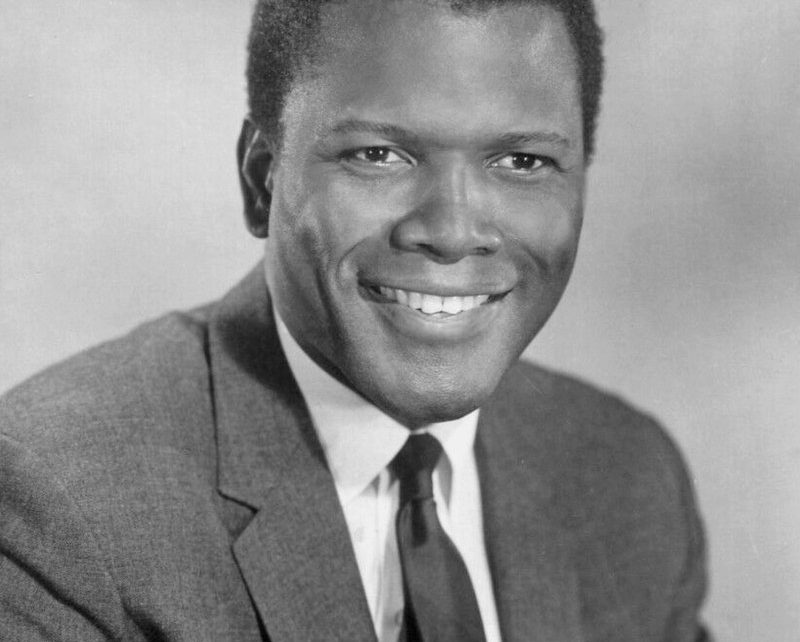
Sidney Poitier, 1968. (Photo: Wikipedia)
He Came to Dinner 55 years Ago
Sidney Poitier was the first black man to win the Academy Award for Best Actor
By Martin Marks, February 7, 2022 8:07 am
Renown screen actor Sidney Poitier died recently at the age of 94. Mr. Poitier was the first black man to win the Academy Award for Best Actor for his role as Homer Smith in Lilies of the Field in 1964. Perhaps his most iconic role though was as John Prentice in the 1967 film Guess Who’s Coming to Dinner. In the movie, Prentice is first introduced by his white fiancé Joey Drayton (Katharine Houghton) to her parents played by Spencer Tracey and Katharine Hepburn.
Keep in mind that this movie was no retrospective to a time where intermarriage was, to say the least, frowned upon. The movie was done in real time, as it were; a time where racial tensions were simmering, ready to come to full boil with the 1968 assassination of Martin Luther King, Jr., and the subsequent riots that broke out in cities across the nation. Further, 1967 was the very same year that the U.S. Supreme Court unanimously decided Loving v. Virginia which held that still existing state laws banning interracial marriages (miscegenation) violated the equal protection clause of the 14th Amendment to the U.S. Constitution.
Long before legal impediments to interracial marriage were implemented, there were other obstacles to marriage between persons of differing races and ethnicities. Geographic limitations going back hundreds if not thousands of years certainly prevented intermingling, let alone knowledge of different races. As the centuries past and transportation technologies evolved, those geographic barriers dissolved for essentially every race and ethnicity on the planet. Yet, as those geographic boundaries disappeared, traditions and cultural taboos prevailed, some of which exist even today. So, while it would no longer be unusual to live next to, work with, or socialize among peoples of differing races, interracial marriages were and still less likely to occur than marriage between couples of the same race. The trends are indeed changing, though. Consider:
- At the time the Loving v. Virginia case was decided in 1967, intermarriage hovered around a 3% rate in the U.S. 50 years after the SCOTUS decision, that number is approximately 17% and very well could reach one fifth of all marriages by the time these numbers are extrapolated from the 2020 U.S. Census.
- The upward trend is most prevalent in California and a few other western states, where the largest numbers of Hispanic and Asian immigrants are to be found. California’s intermarriage rate already has surpassed the one fifth level.
- Not only have the intermarriage numbers trended upwards, but predictably public acceptance of these marriages has also increased. A 2017 Pew Research paper shows a dramatic increase in not only public acceptance of interracial marriage, but also an increase for those stating that intermarriage is good for society.
- Anecdotally, the likelihood of seeing interracial couples presented in the popular culture of film, television, advertising, etc. has increased as well. This is not without controversy of course. Many less accepting will claim that interracial couples are overrepresented in popular culture. Yet others will still nitpick at precisely which interracial couples are being presented and this somehow perpetuates bigotry itself.
And while on the surface, trends in both the percentage of intermarriages and society’s acceptance of same will continue to rise, there are no doubt challenges to be encountered. We are a nation that loves its hyphens like no other. We either identify ourselves or have others apply identifying labels on our behalf such as African-Americans, Native-Americans, Asian-Americans, Hispanic-Americans, and even Euro-Americans. Our society is still one way, or another obsessed by race. Important, and even state sanctioned decisions are made solely on the basis of race. As we move further along in time, and as future generations of already mixed-race individuals marry and produce “mixed-mixed-race” citizens, it will become increasingly difficult to identify and label the races, even with our precious hyphens. And maybe (just maybe), that will be a good thing.
Rest in eternal peace Mr. Poitier. I for one can state that in re-watching Guess Who’s Coming to Dinner in 2022, I came away with a much different attitude and appreciation than I remember having when I first viewed the film as a young man in the 1970’s. And that is unequivocally a good thing.
- Vice President Vance Visits The Golden State - February 22, 2025
- Is DEI Ready To DIE? - January 4, 2025
- Just How Effective Was The Abortion Debate in The 2024 Election? - November 18, 2024




